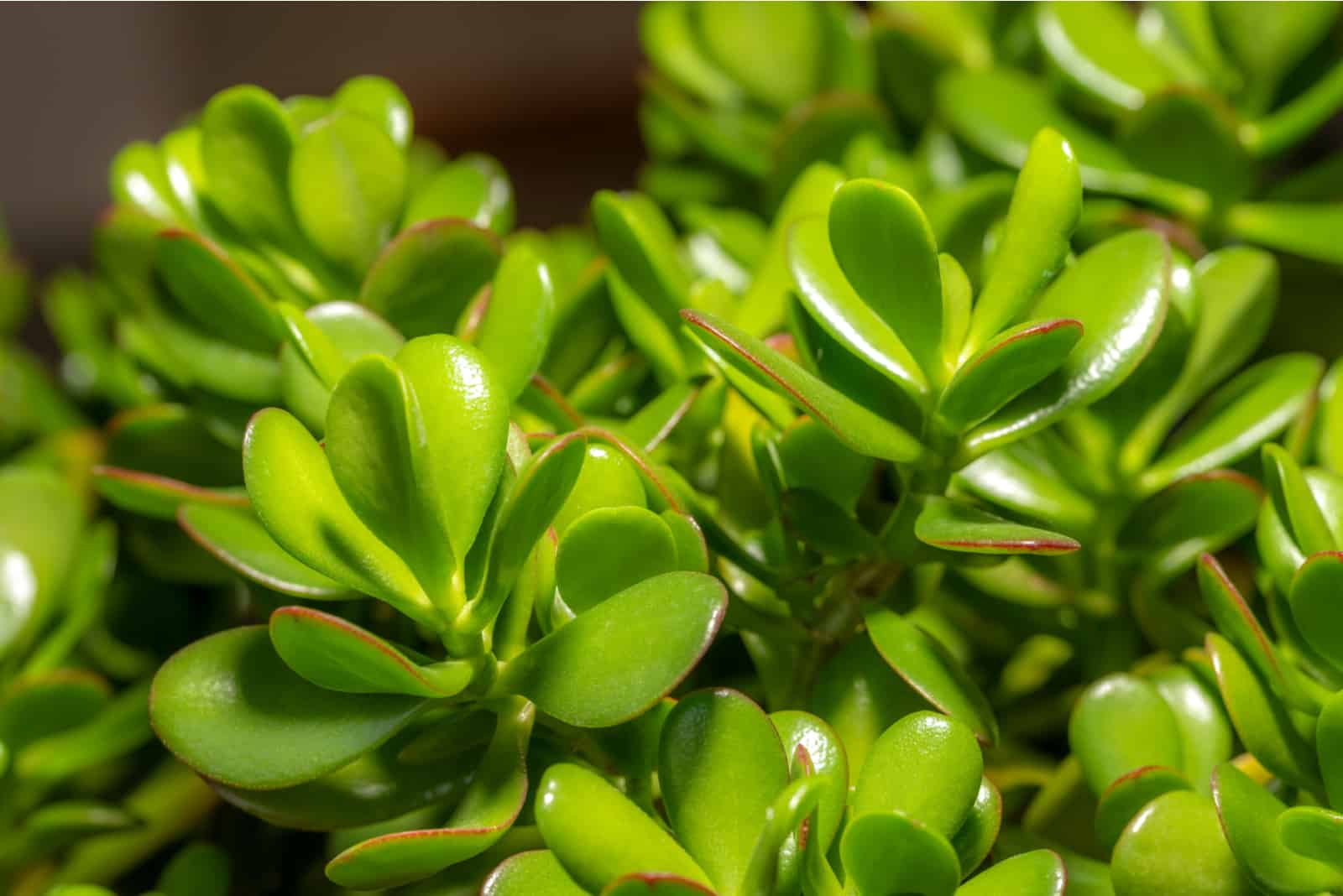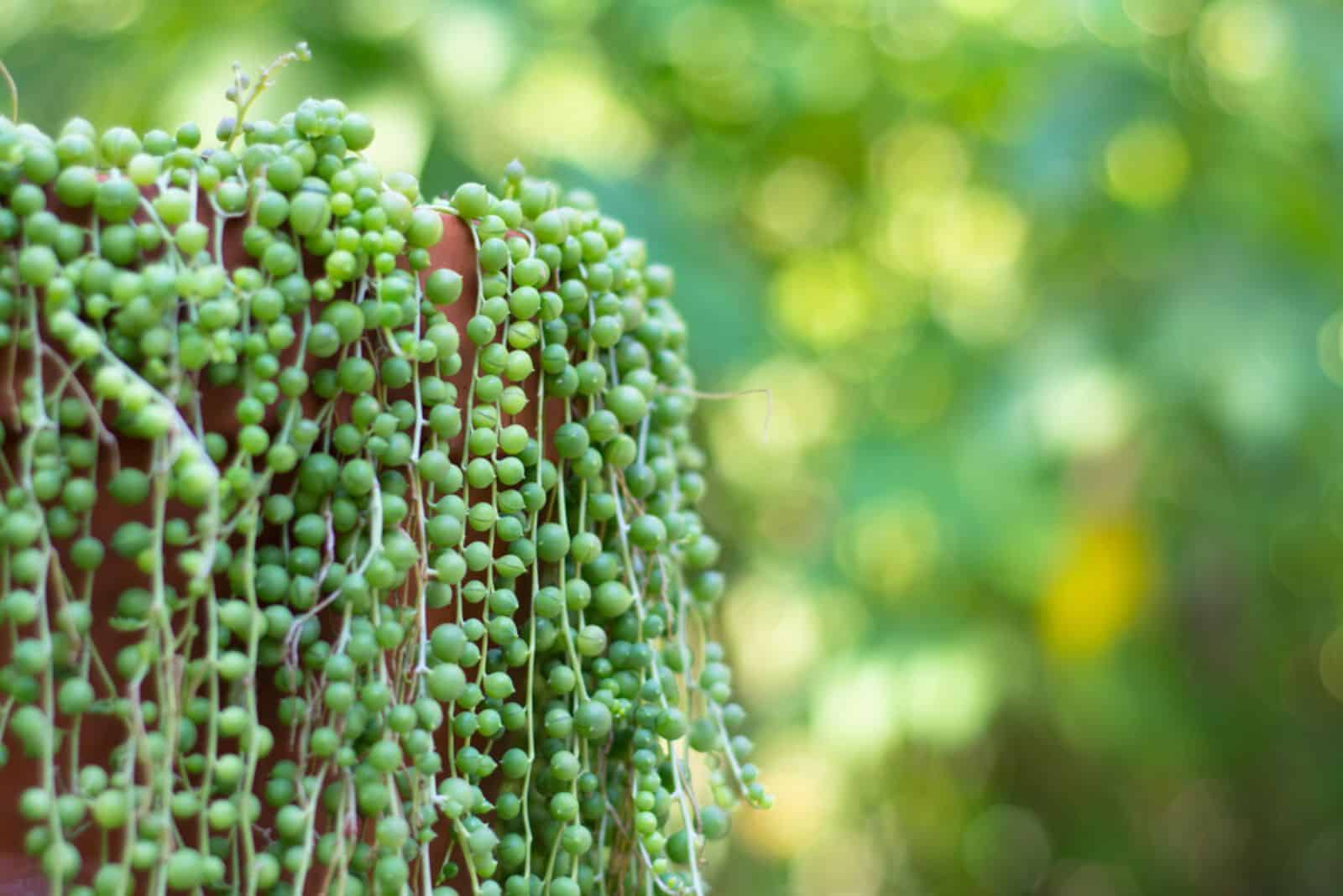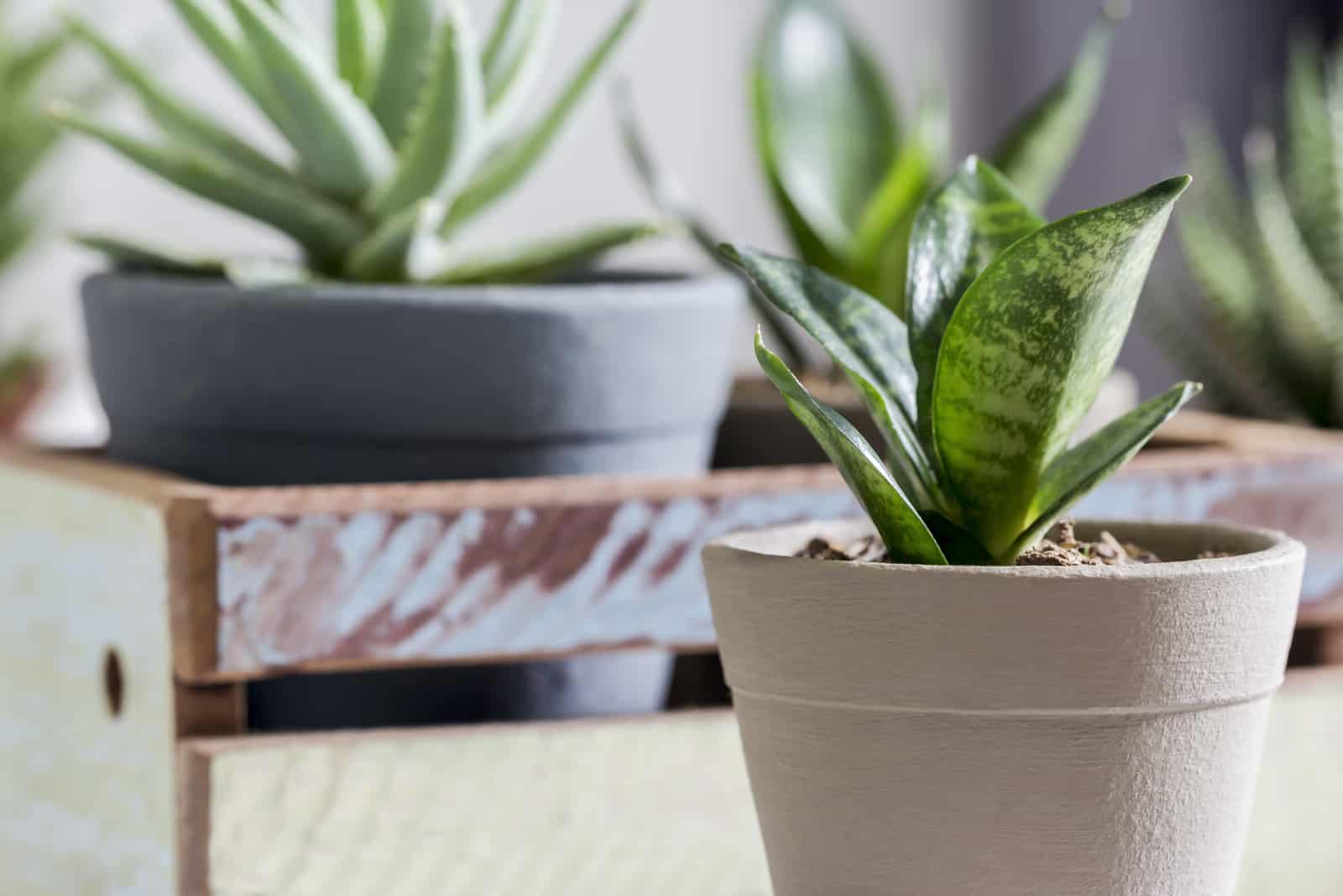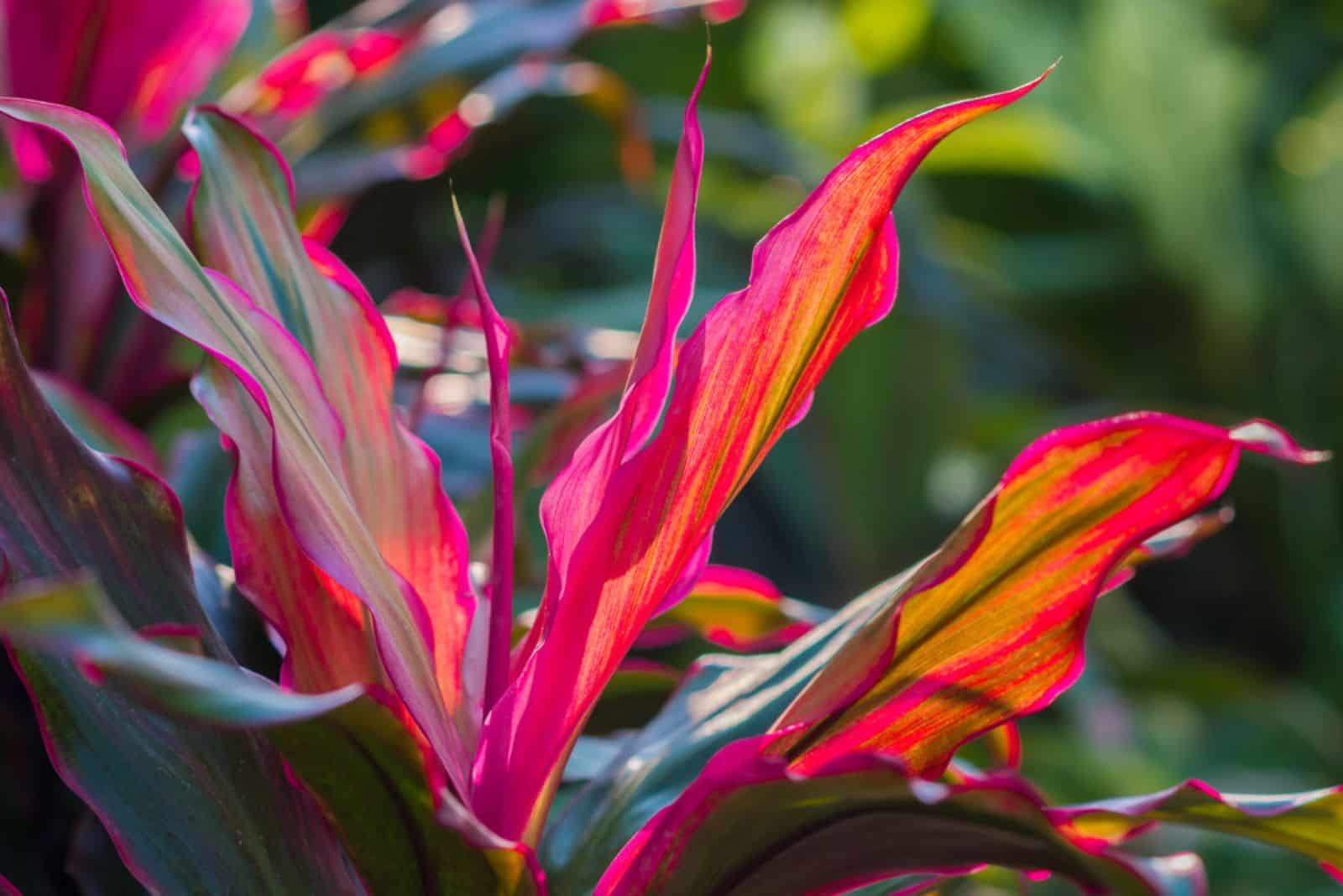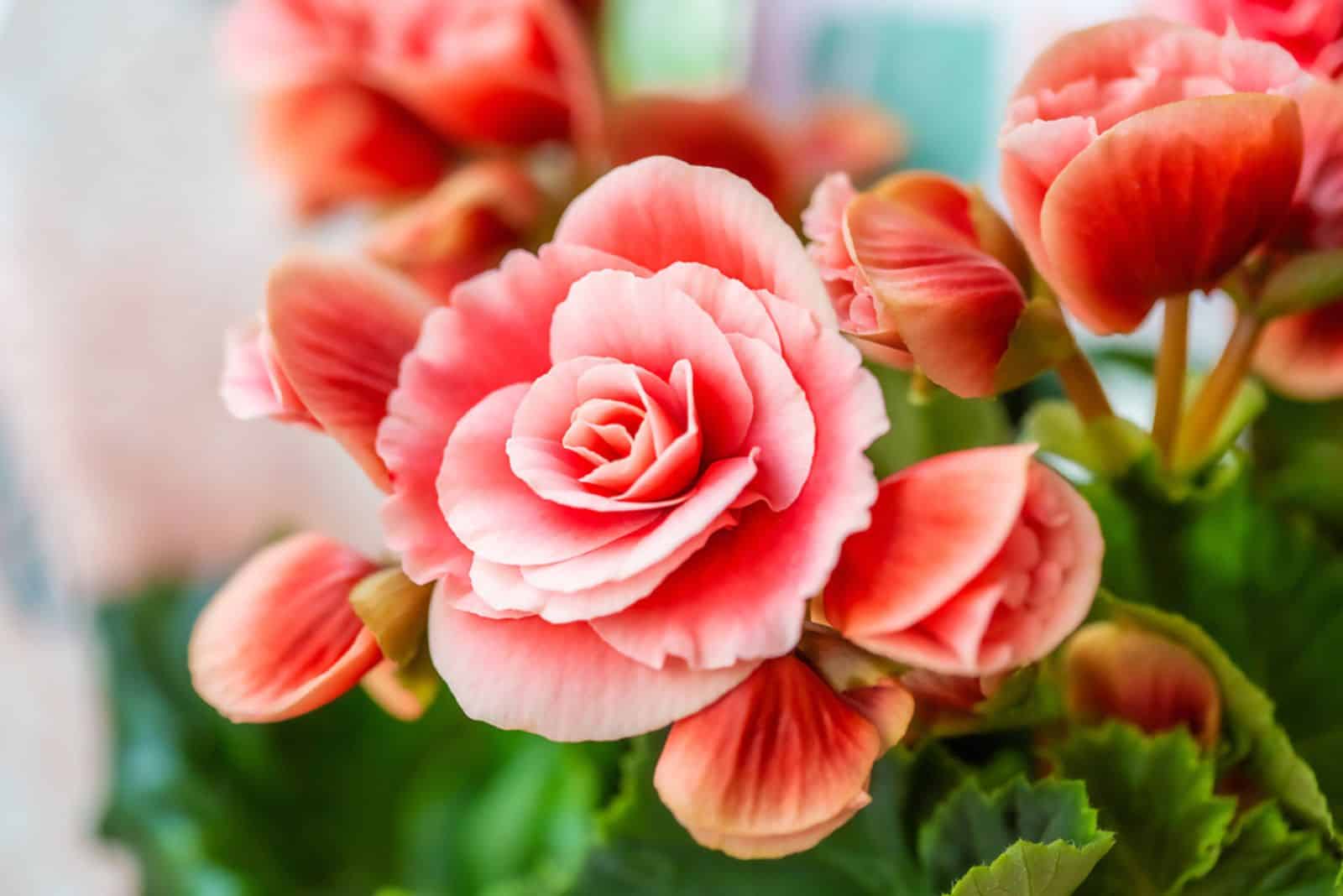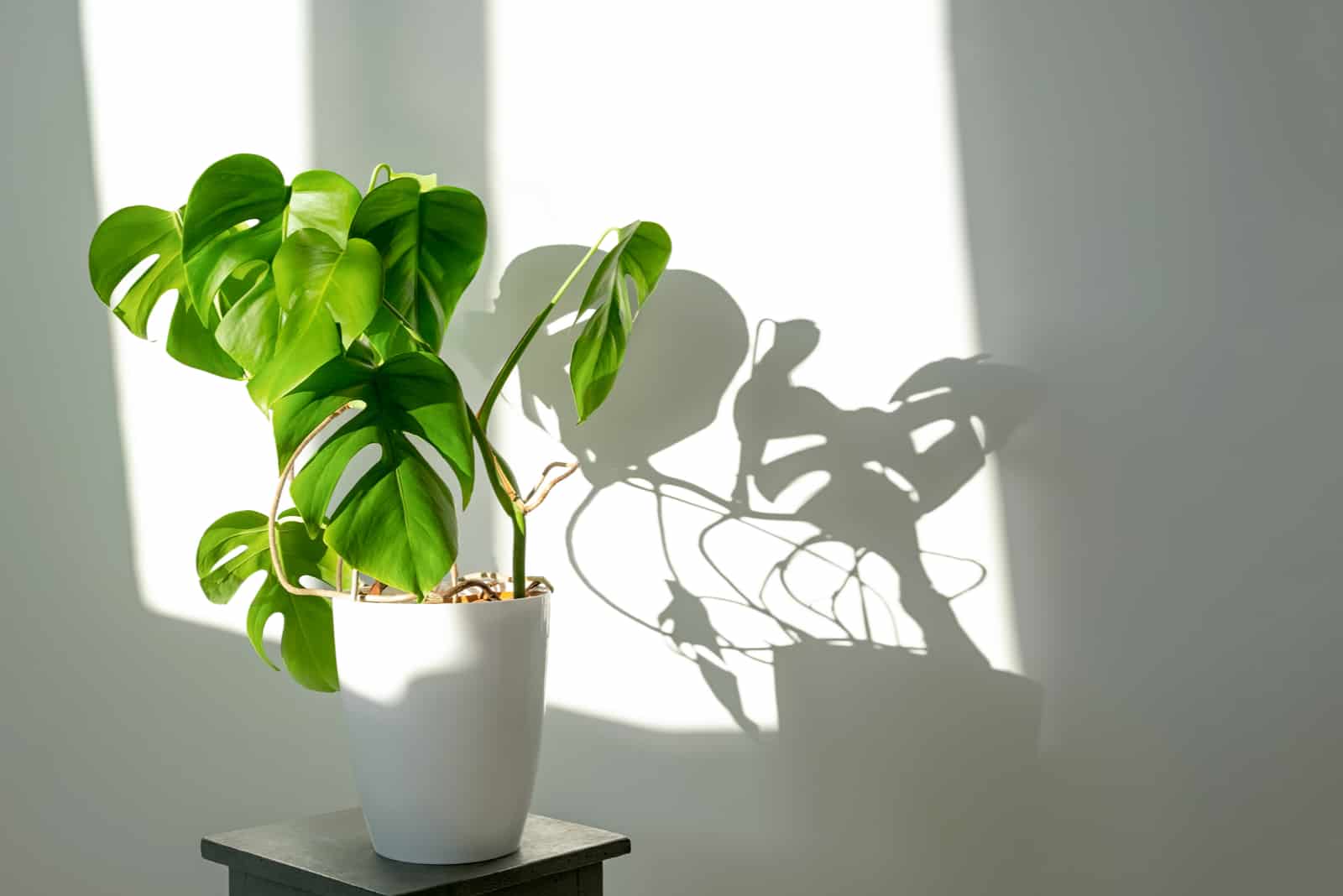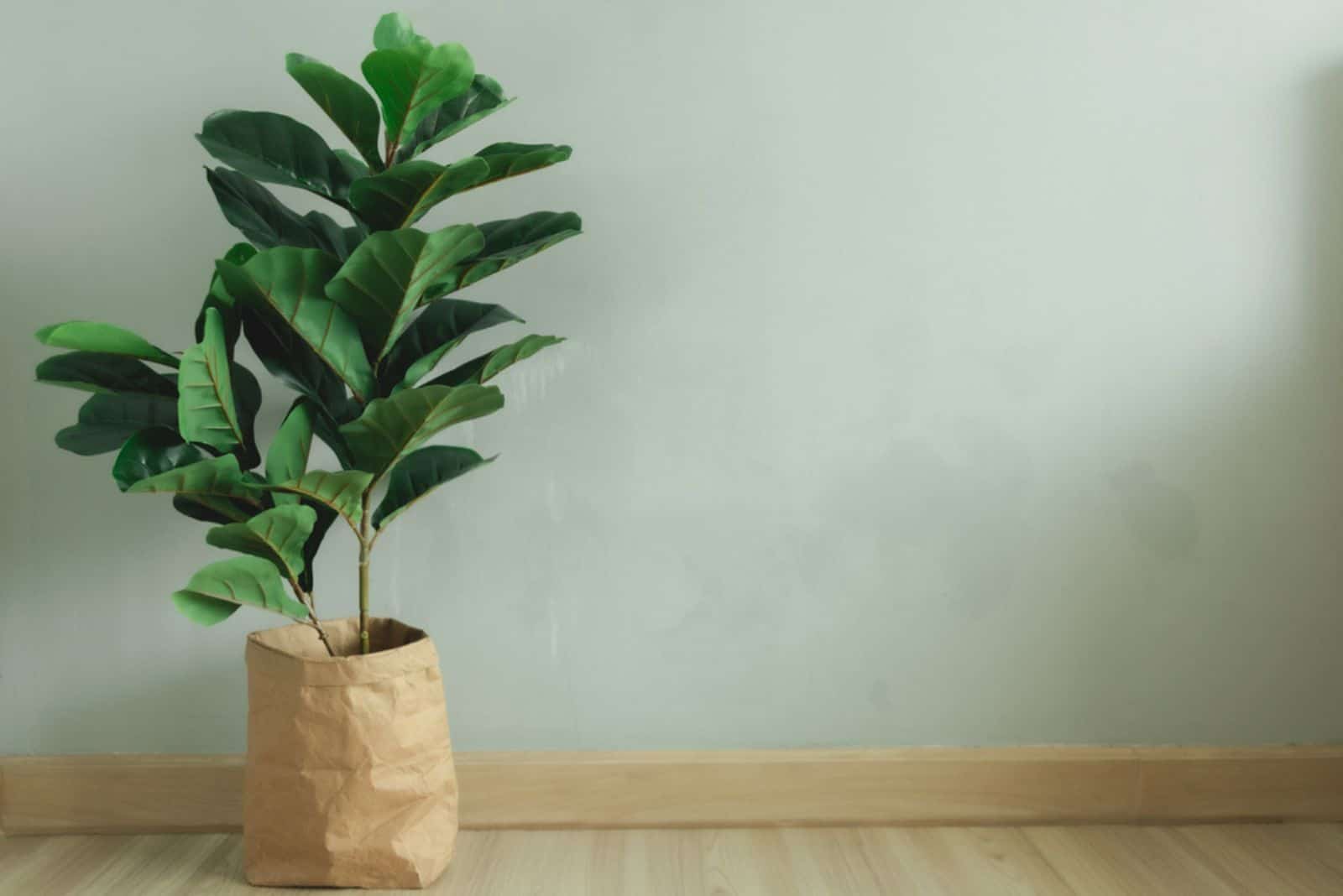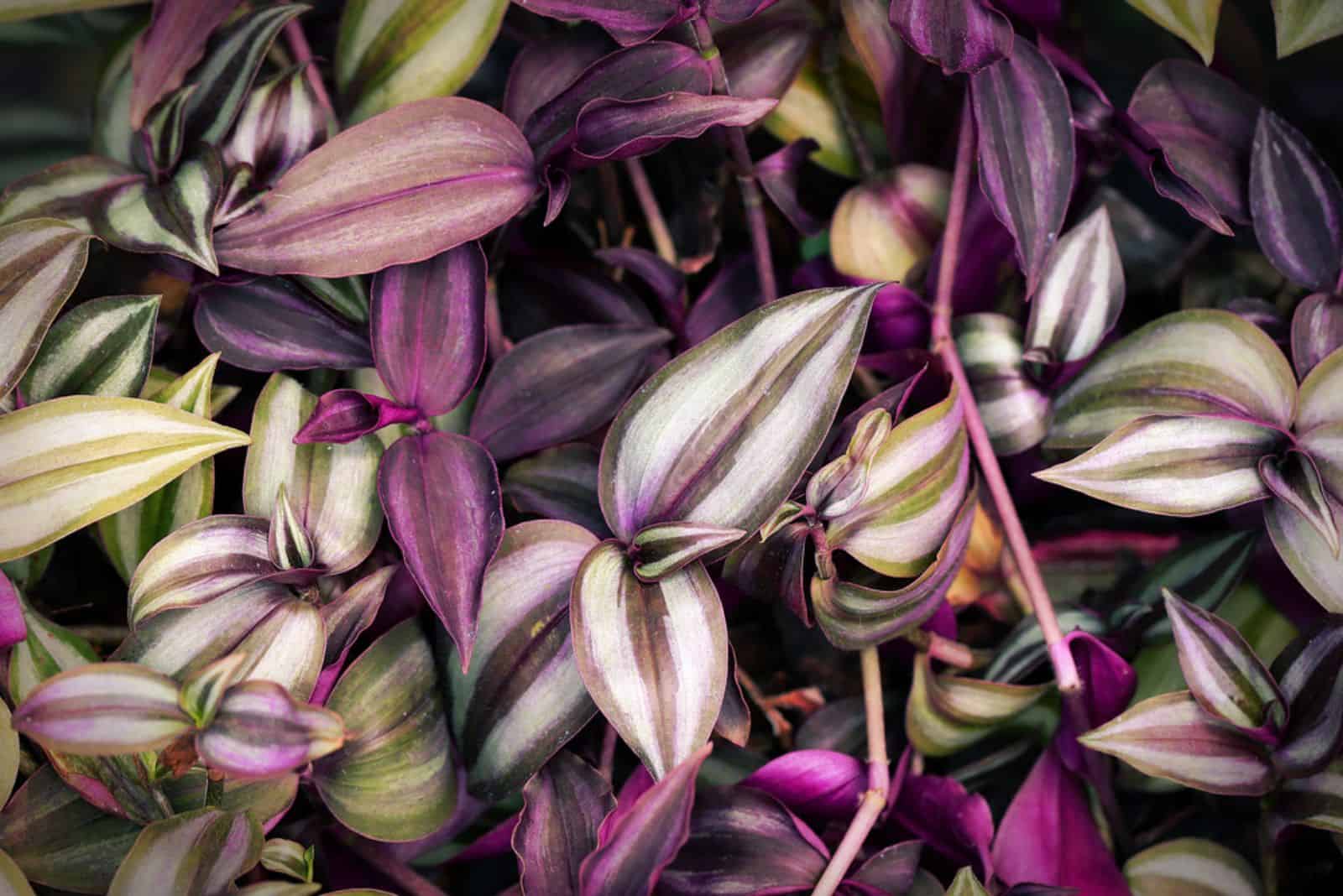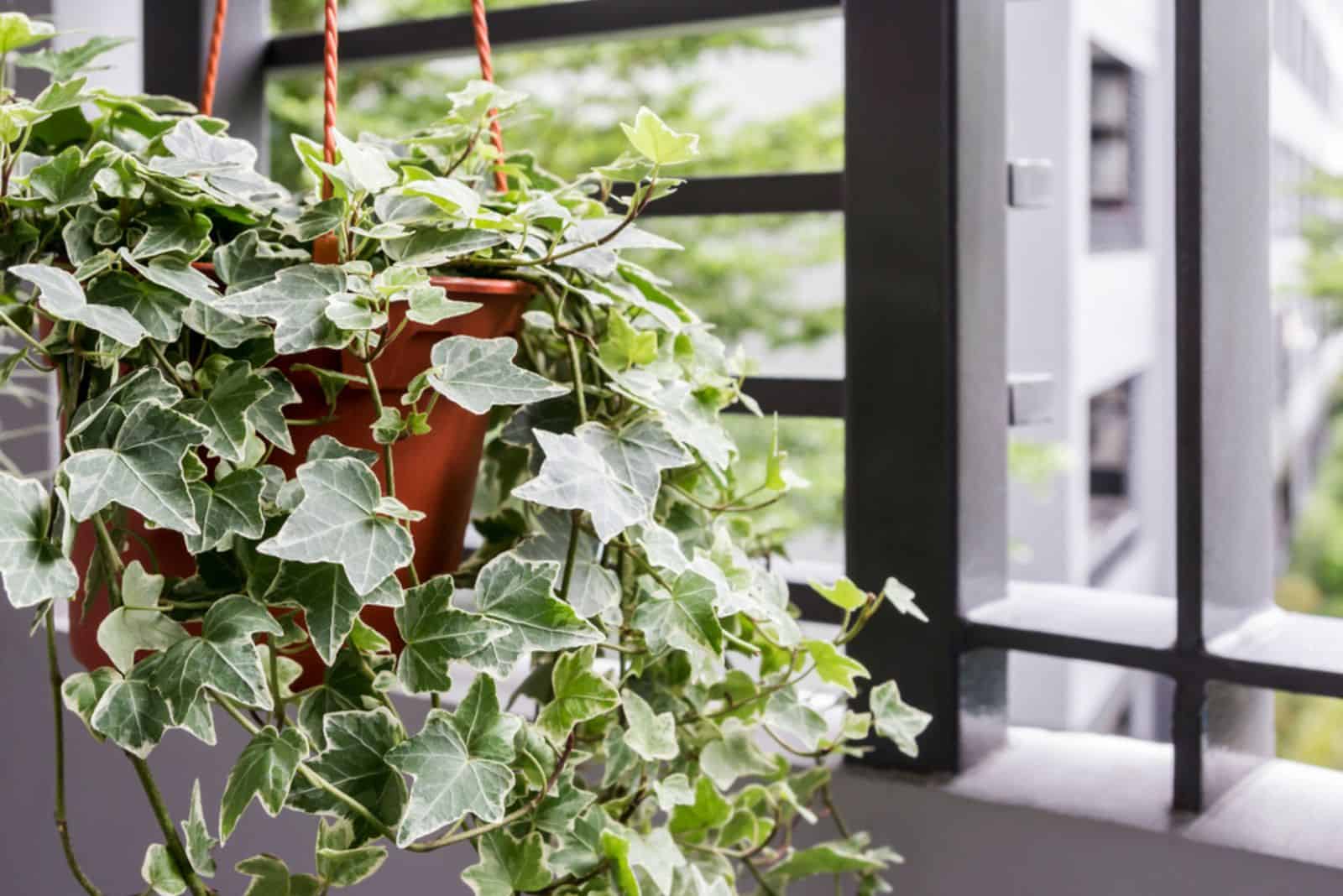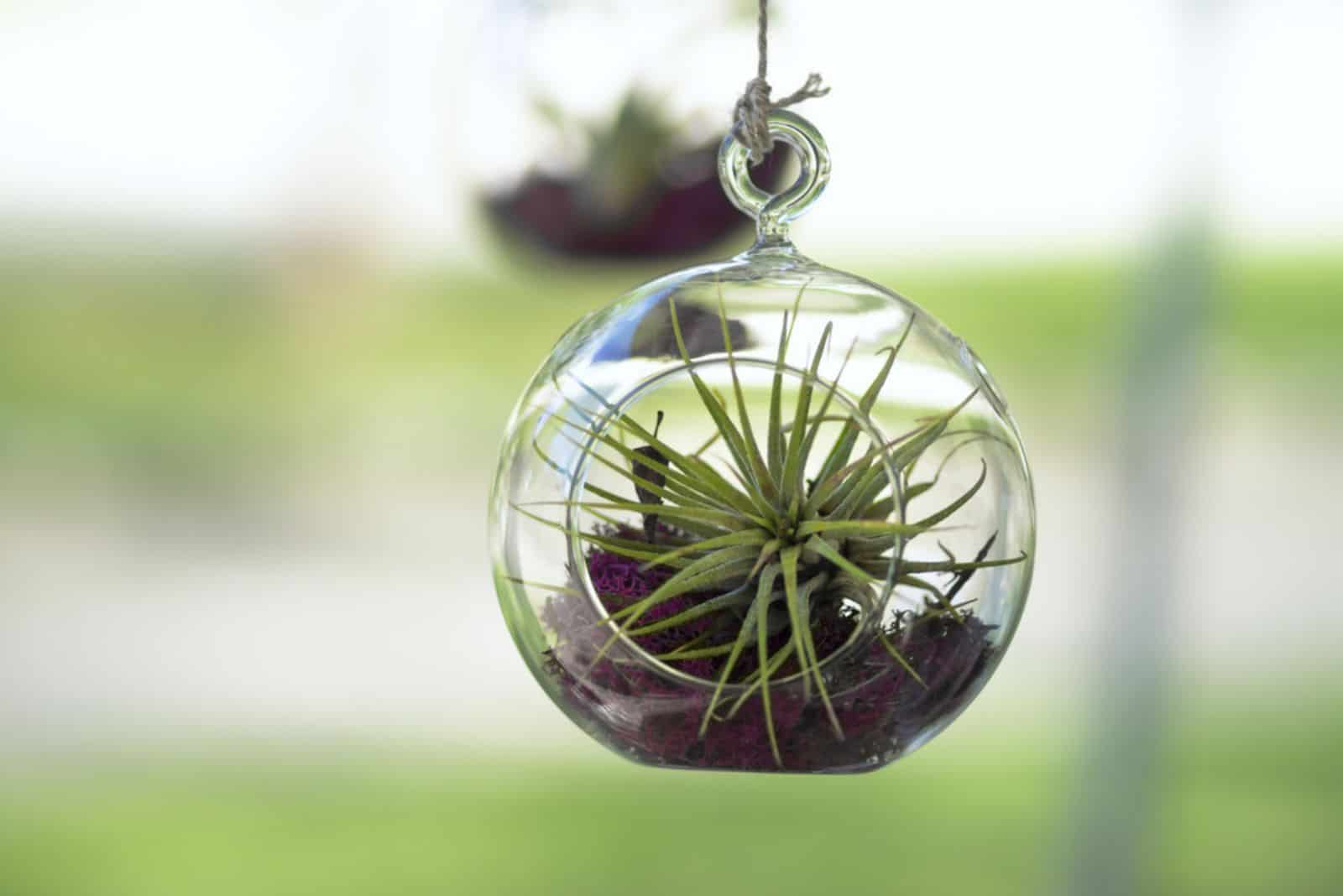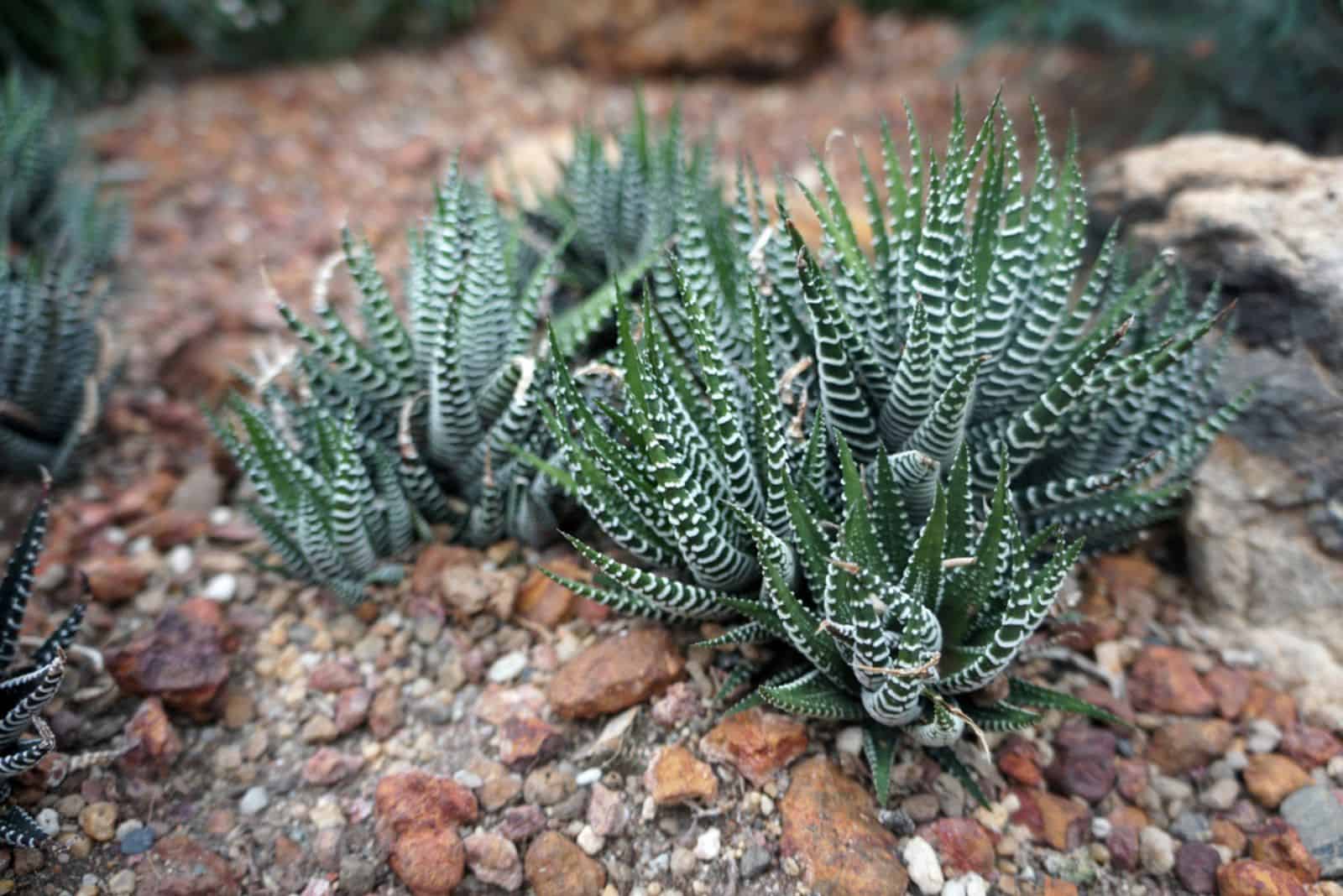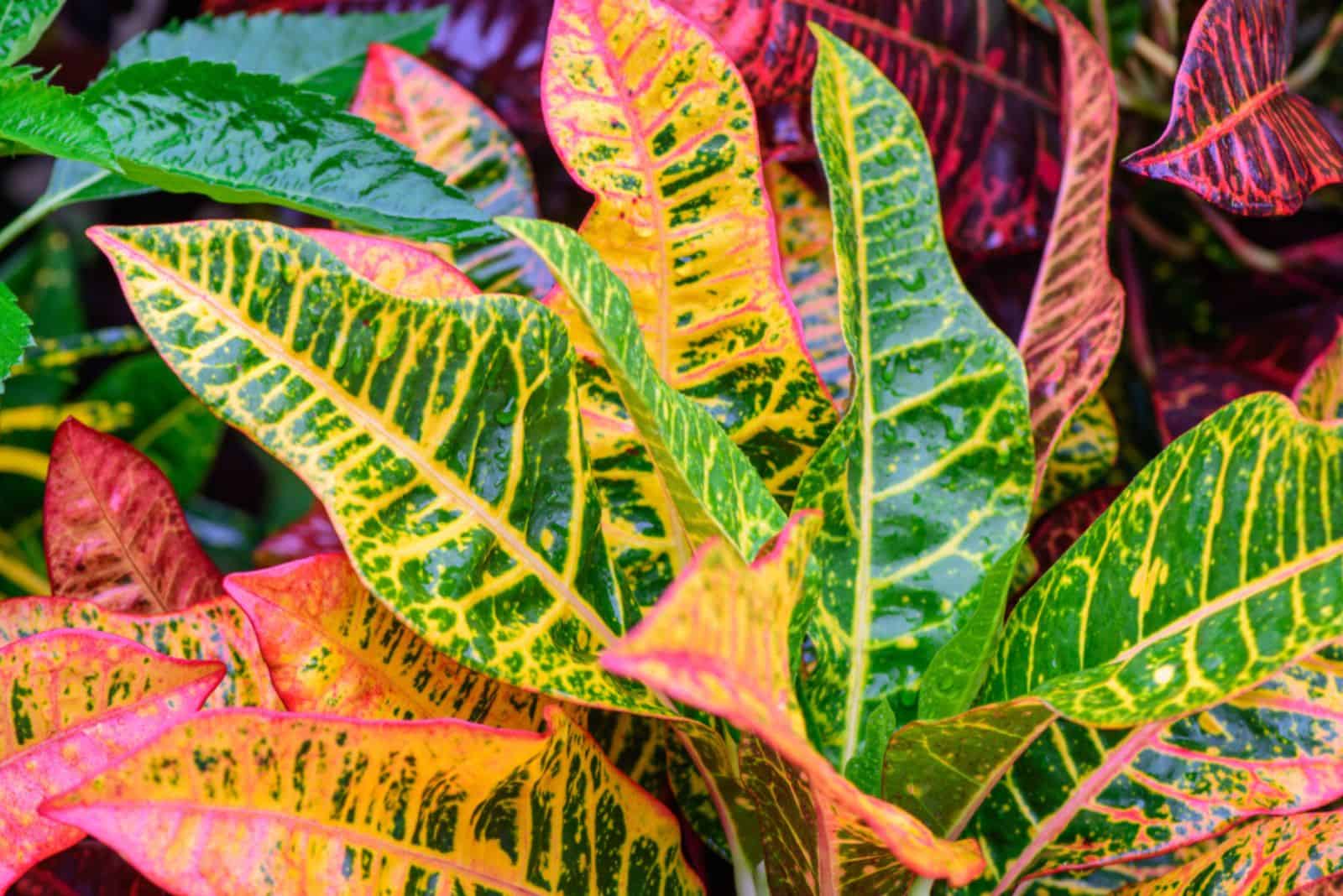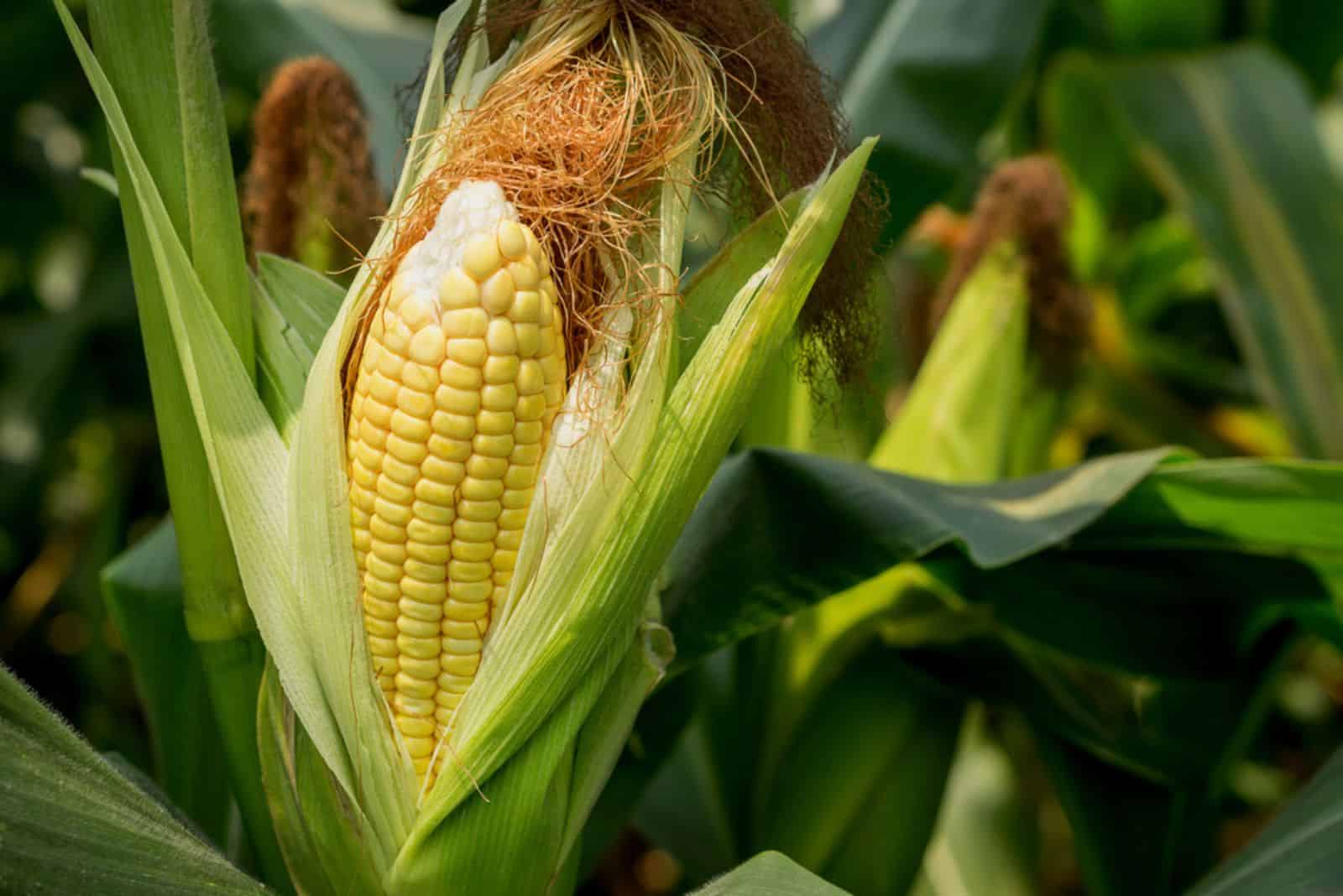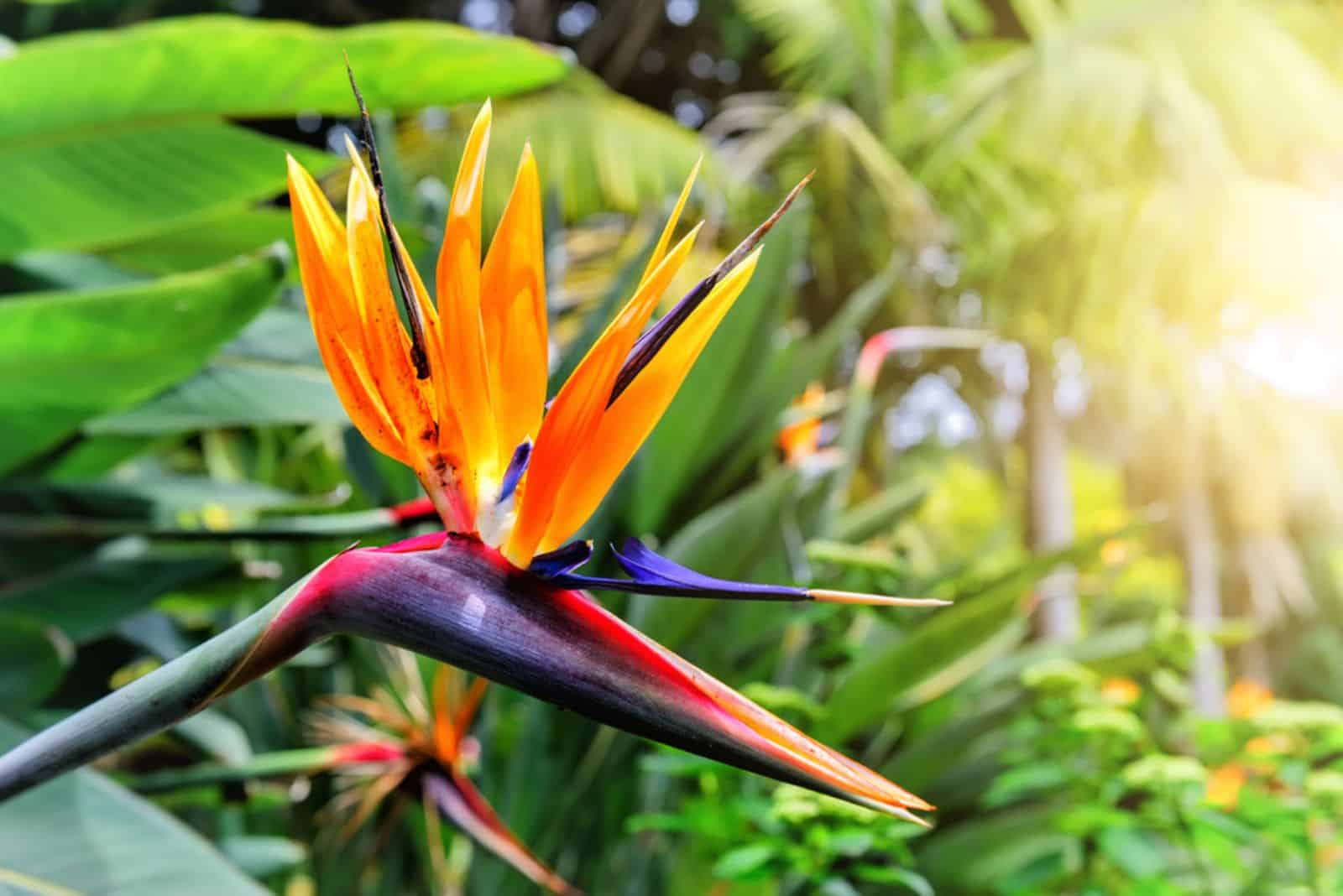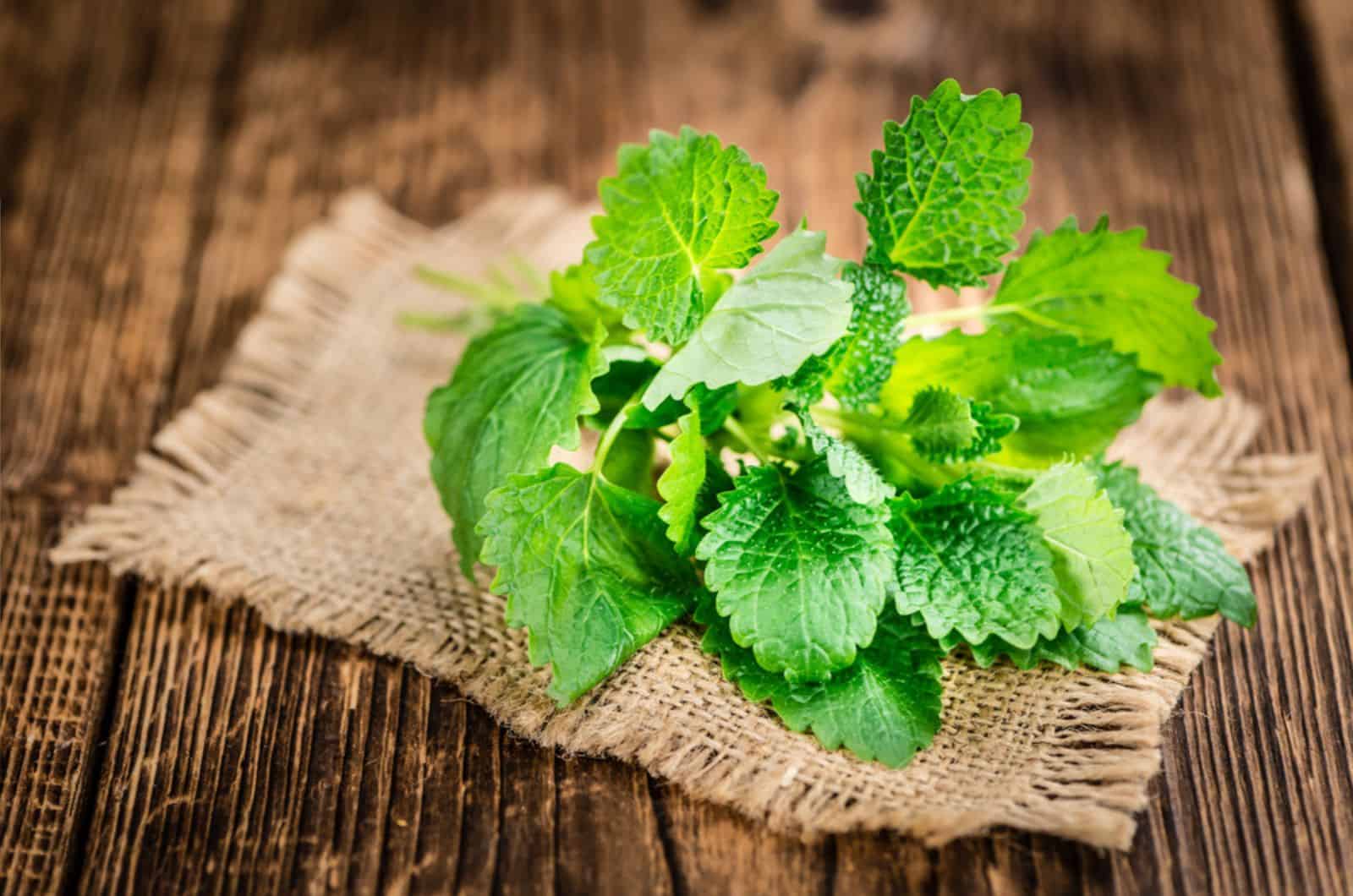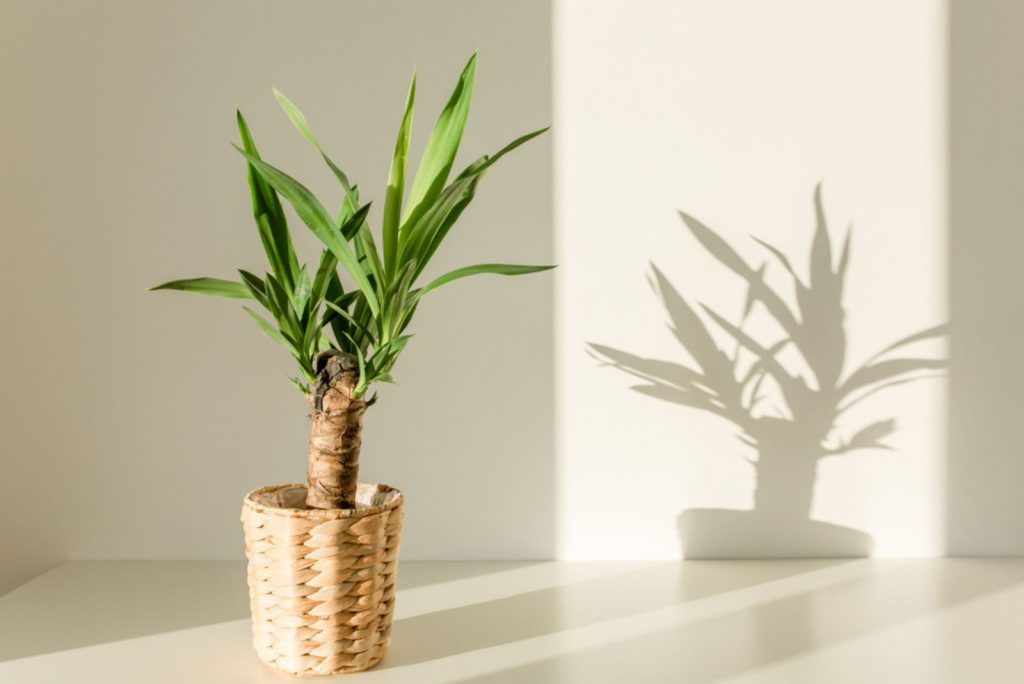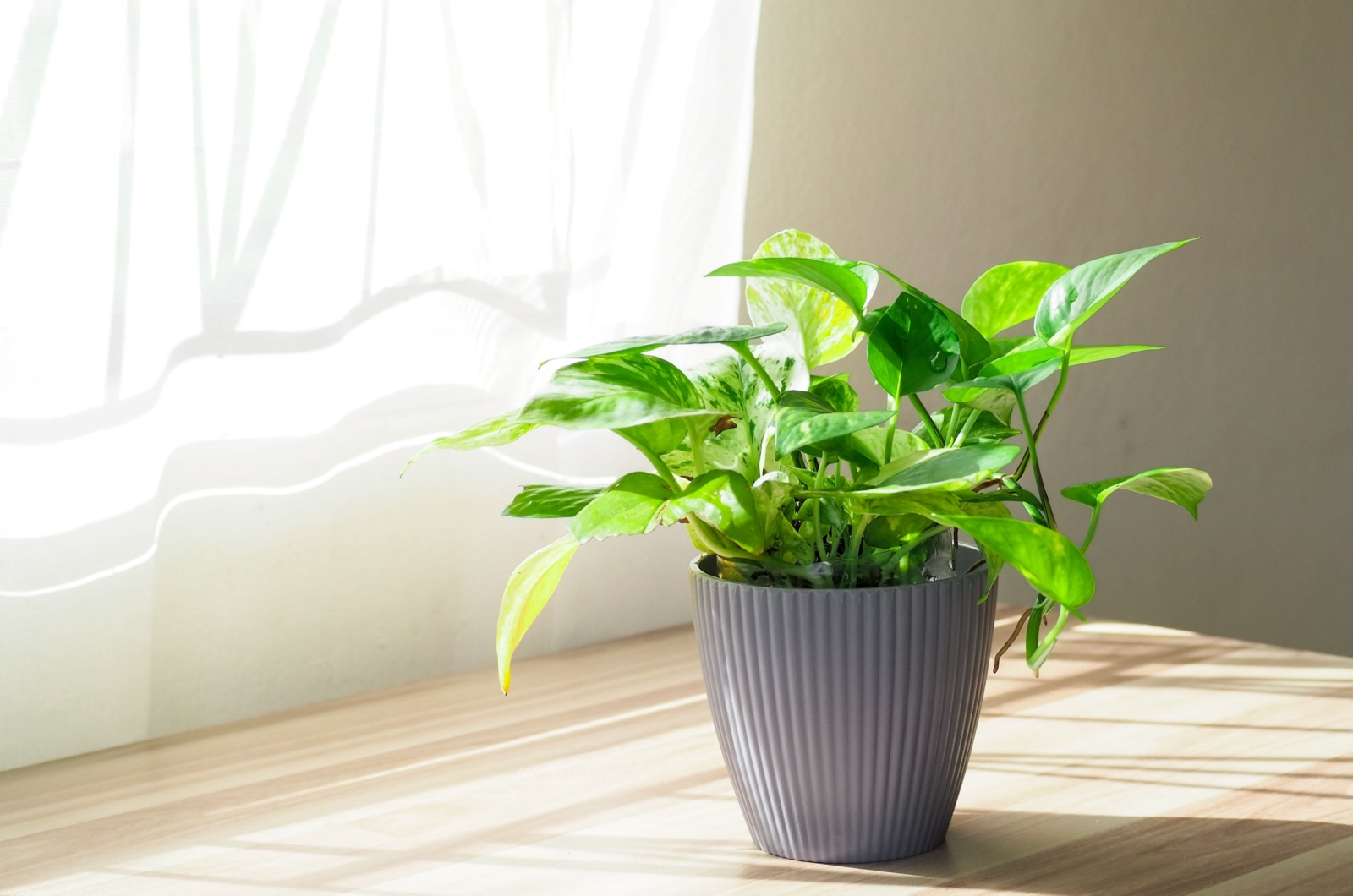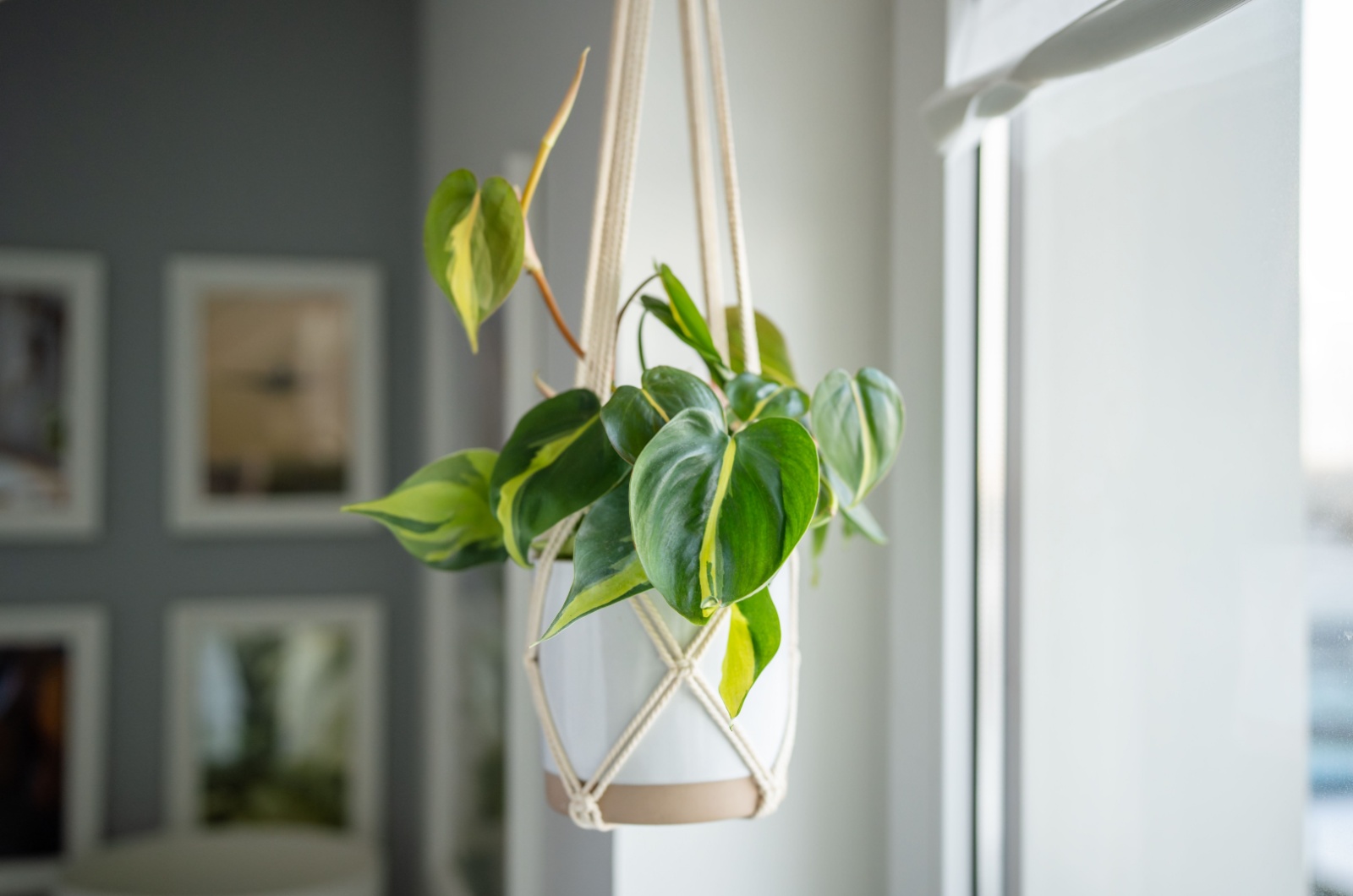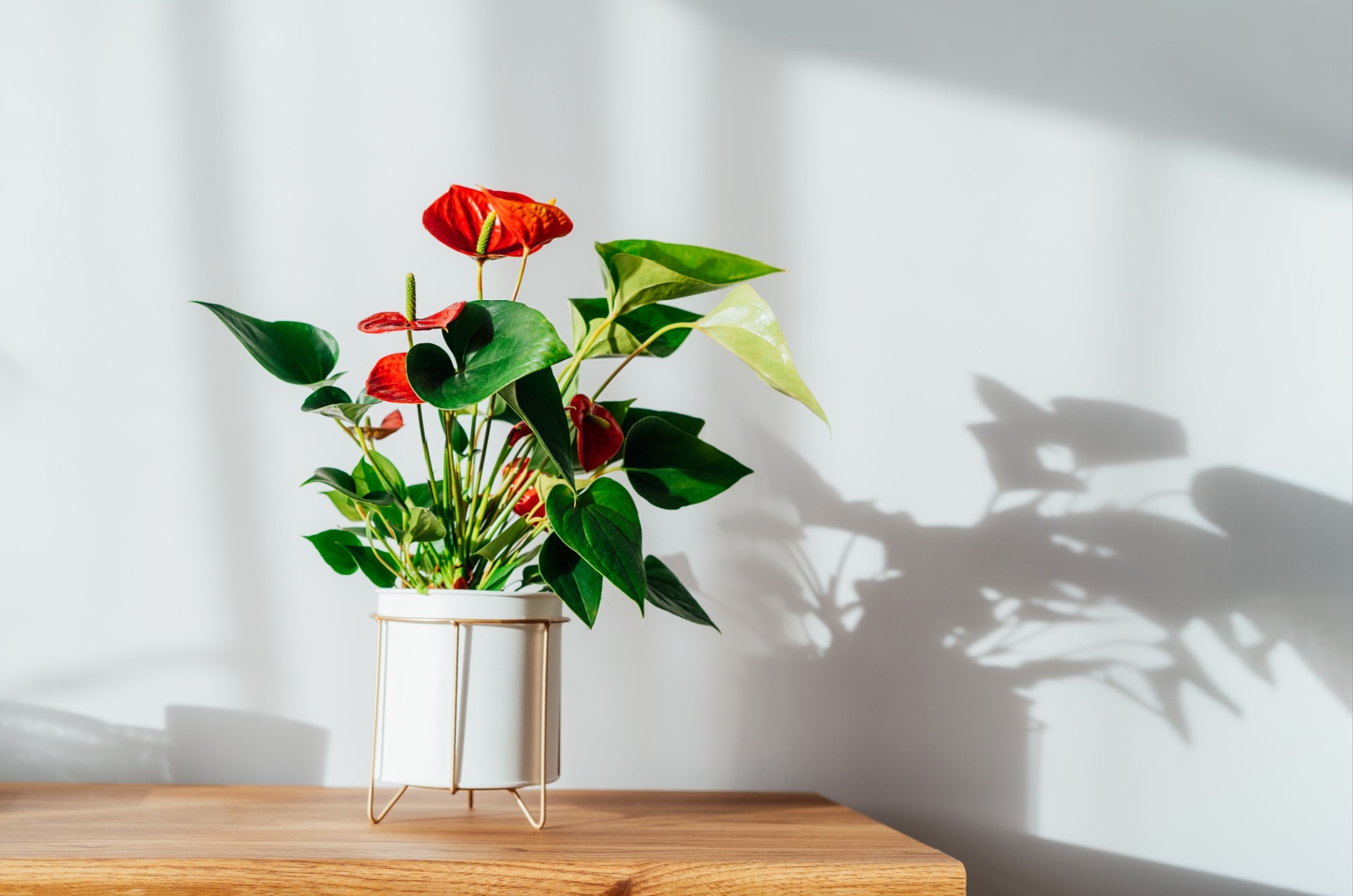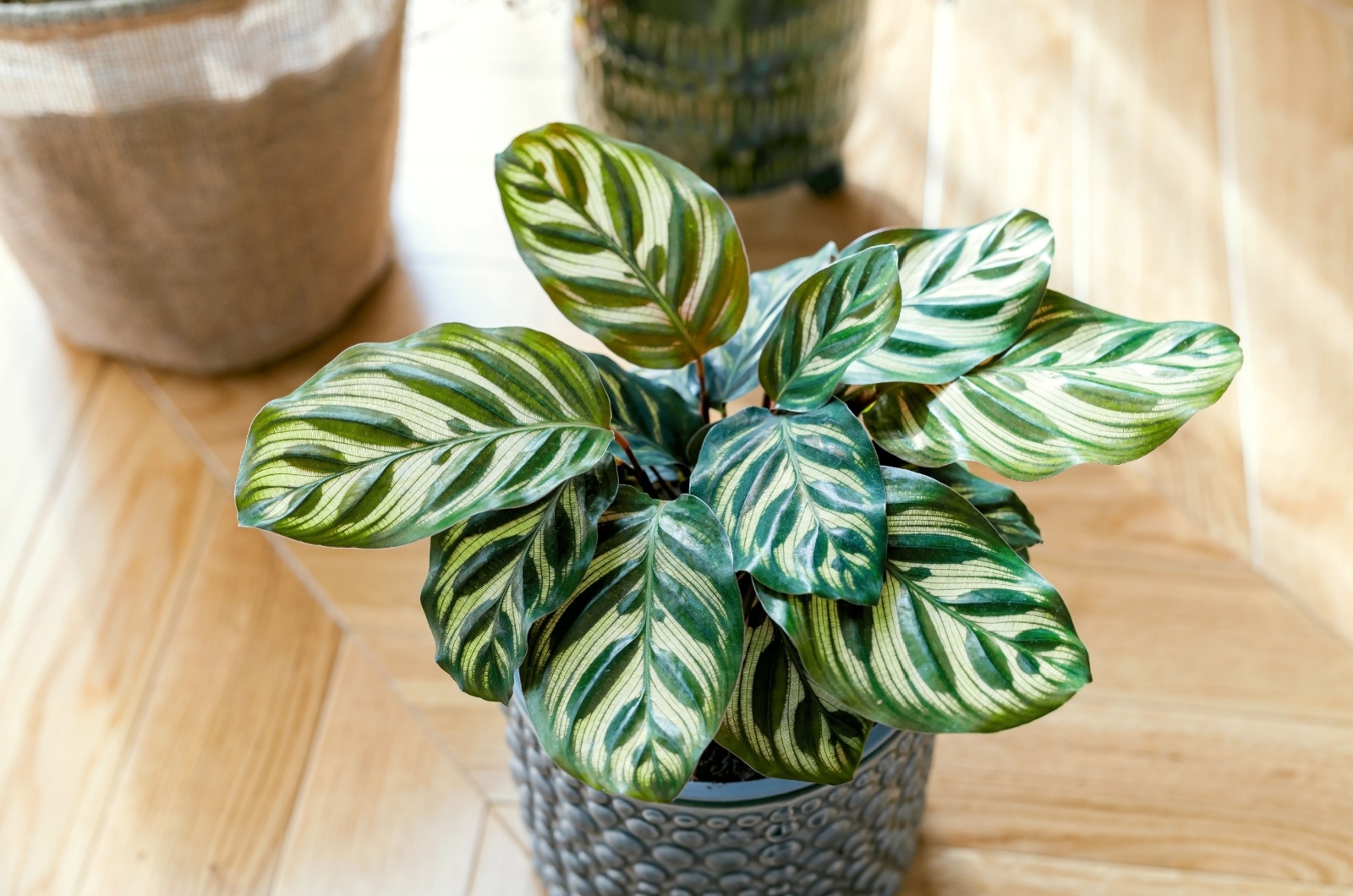Each houseplant has its own requirements, and providing good lighting conditions is a crucial step in any plant care guide. West-facing windows provide both indirect light and direct sunlight during different times of the day.
Therefore, plants that love growing in full sun should be placed near west-facing windows. They also provide bright light, so if you keep plants 5 feet away from the window or you cover the window with a sheer curtain, the plant will receive enough indirect sunlight.
However, this is not an ideal location for plants that don’t like the afternoon light and thrive in low-light conditions; in this case, an east-facing window is the solution.
Now, let’s see what the best west-facing window plants that you can grow are, including their appearances and plant care requirements.
Most popular houseplants can be placed on a west-facing windowsill. It means that these plants enjoy direct light, especially during the day.
Let’s see what the best plants that can grow when exposed to the direct sun are.
1. Jade Plant (Crassula Ovata)
There are numerous Jade plant benefits — it boosts indoor humidity, enhances air quality, is simple to maintain, brings luck, has medicinal benefits, promotes good Feng Shui, is easy to propagate, lowers stress levels, and looks absolutely stunning!
The Jade plant is a succulent that has a relatively long lifespan. It is a South African native, and because it makes exquisite pink and white flowers, it is typically cultivated indoors for decorating. You can place it on a table to cheer up your workplace.
When it comes to plant care, the Crassula ovata benefits from moderate temperatures and filtered light. The same is true for irrigation: use moderate amounts of water to avoid root rot. Always let the soil air dry fully before watering it again.
2. String Of Pearls Plant (Senecio Rowleyanus)
Here is another succulent that originates from southern Africa. The String of Pearls plant (also called Senecio rowleyanus) produces long vines with pearl-shaped leaves, hence the name String of Pearls!
It looks quite exquisite when grown in a hanging basket.
Although it prefers direct sunlight, this succulent may also tolerate partial shade, especially in the hot summer afternoons. Low light levels will inhibit its growth, but that’s not necessarily a bad thing because it means you won’t need to prune it as frequently.
They will thrive in a west-facing window in the chilly winter months. The plant may need to be moved away from the window or to an east-facing window with less intense morning sun if a west-facing window gets too hot during the summer.
3. Snake Plant (Dracaena trifasciata)
The Dracaena trifasciata’s common name is “Mother-in-law’s tongue” It is an evergreen perennial that grows stunning, sword-like green leaves with yellow margins.
Snake plants are great oxygen suppliers, which is one of the reasons why everyone should get one for their bedrooms. They are able to absorb toxic pollutants from the air and convert carbon to oxygen, which improves your indoor air quality.
They are also low-maintenance and can adapt to various growing conditions. When it comes to light requirements, these plants actually prefer growing in low light. You might be wondering why we would put it near a west-facing window, and it’s because they like the warmth of direct sunlight!
Therefore, you should put on a sheer curtain to prevent those beautiful leaves from getting sunburned.
4. Ti Plant (Cordyline fruticosa)
The Ti Plant is a common houseplant with a wide variety of red-colored variants.
The amount of sunshine will determine the color of the red lanceolate leaves. The tall leaves have red crowns and are rosette-shaped. Amazingly, the new growth on this plant has a variety of pink tones.
If a Ti plant doesn’t receive enough light during the day, their lovely variegated leaves will slowly start losing color. If you keep them in low light conditions, the leaves will turn completely green.
They need a few hours of direct sunlight during the day, and they also enjoy the heat even during the summer days! Therefore, keeping them on a west-facing windowsill is perfect.
If you want to see some other plants with red leaves, then check out this list of plants with red leaves.
5. Aloe Vera (Aloe Brevifolia)
The succulent plant Aloe vera has long, lush green leaves that can fit into any home decor! The spiky green leaves have white flecks that are either randomly gray-green or pure green in color when they’re young.
However, as the plant ages, these white flecks vanish and Aloe vera develops its distinctive appearance. They are also evergreen plants, so they will decorate your space all year-round!
You are probably already aware of the numerous health benefits that come with Aloe vera — cuts and bruises can be effectively treated by squeezing the gel from these plants. They are also able to improve air quality similarly to Snake plants.
These indoor plants thrive in well-draining soil and warm temperatures. They can grow perfectly fine in bright sunlight, though I would suggest you keep them away from the afternoon sun during the summer months since it can be the reason Aloe leaves start bending and burning.
The perfect solution is to keep them in bright indirect light.
6. Begonia spp
If you pay attention to a few specifics, you can grow a begonia to see a flower with mesmerizing blossoms. The first thing you need to think about is the soil pH, which should always be between 5.5 and 6.5. Your plant won’t be able to absorb the nutrients it requires to survive, grow strong, and be healthy if it isn’t.
This plant also requires appropriate drainage because it is susceptible to root rot. To guarantee that all the extra water can drain away, always add perlite, peat moss, and vermiculite to the potting soil.
It enjoys partial shade to full sun, and blooms most densely and attractively when it receives morning light and afternoon shade. When choosing a location for your plant, keep in mind that it can also thrive in complete shade but not in full sunlight.
Therefore, east-facing and west-facing windows are perfect locations. However, if you choose to grow them near west-facing windows, protect them from the direct sun the other half-day.
7. Monstera
You have probably already heard of these tropical beauties!
Monstera plants produce green and broad leaves, which are fenestrated in most varieties. They need high-light conditions in order to grow and thrive properly.
Improper light conditions are one of the most common Monstera problems. Your Monstera will grow new leaves that will either take a very long time to open or not open at all if it doesn’t get enough light — and Monstera plants are all about the leaves!
On the contrary, too much direct light might burn these lovely leaves and make them look brown and crispy.
These plants need at least 6 hours of indirect light in order to grow and thrive. You can keep them near a west-facing window, just make sure that they don’t get sunburned. However, you can keep them near east-facing or south-facing windows and you won’t have to worry about the sun damaging them.
8. Fiddle Leaf Fig (Ficus Lyrata)
The large, dark green leaves of this plant provide a lovely canopy over the trunk, but they can be too much in some areas, especially those with limited space. This plant needs large spaces where it can flourish.
Inadequate irrigation (under or overwatering) and inappropriate placement are the roots of many problems, including Fiddle leaf fig leaves curling and yellowing.
Keep this plant at least 5 feet away from west-facing windows as it cannot stand direct sunlight, especially during the midday and afternoon hours.
Although this plant may handle certain lower light levels, bright indirect light is preferred for its appearance.
Plant this quickly growing tree in soil that drains well, water it just when the soil starts to dry out, and raise the humidity to 50%.
9. Inchplant (Tradescantia Zebrina)
The Wandering Jew, also known as the silver inch plant, is one of those plants that looks wonderful in any container, be it a conventional pot, a hanging basket, or a glass jar with water and LECA. It produces pretty pink, purple, or green leaves with stripes.
This plant can be naturally found in Mexico and the Caribbean, which means that they have adjusted to warm temperatures and lots of sunlight. Therefore, growing them near a west-facing window wouldn’t be an issue, especially since they can tolerate a bit of direct sunlight throughout the day.
If these plants don’t receive enough light, they will start losing their prominent colors and stripes on their leaves. The plant would appear leggy and sad.
10. English Ivy (Hedera Helix)
Hedera helix, sometimes known as English ivy, is a climbing and trailing plant that blends in well with any setting. The leaves, which resemble little pears, frequently contain three to five waxy lobes without a single hair. The top is lighter than the bottom, and they are a dark green color. It also produces lovely white flowers!
English ivy doesn’t require artificial lighting because it can thrive in both full sun and full shade, which is why west-facing windows are perfect for them. Nonetheless, they can easily adapt to growing in various light conditions.
When it comes to other plant care requirements, they need well-draining soil, warm temperatures, and frequent water (but let the soil dry out between waterings). This plant can also absorb moisture, so you can put it in the bathroom as well.
11. Air Plant (Tillandsia)
The Tillandsia is a form of air plant in the Bromeliad family. This group of plants features grass-like, green, and blue leaves that mimic spider plants.
Tillandsias produce violet flowers on a short stalk covered in crimson bracts. Since they are air plants and flourish best in humid situations, they don’t require soil. Each week, these plants require a small amount of watering; all that is required is a brief dip in the water.
When it comes to light requirements, they love plenty of sunshine. They can withstand the direct heat of a west-facing window if you reside in a more humid environment. They will do best in a west-facing window that provides protection from the sun with a sheer curtain if your home is dry.
These special plants can be used to decorate succulent terrariums if you are growing one.
12. Zebra Plant (Aphelandra Squarrosa)
Aphelandra squarrosa, otherwise known as the Zebra plant, is many gardeners’ favorite. It produces large green leaves with prominent white veins protruding from the surfaces, which makes them look like tiny zebras!
On top of it all, the plant produces a lovely yellow flower, which is a great pop of color to the dark green background.
Surprisingly, these plants are not a fan of the direct sun. They need a lot of medium light to grow and thrive. You can simply put a sheer curtain on the window to protect the plant from full sun exposure.
13. Croton Plant
The Croton plant, or Codiaeum variegatum, is a member of the Euphorbiaceae family and native to tropical Asia and the Pacific.
Even though growing Crotons inside might be challenging, there are ways to maintain their health and cultivate them as houseplants.
The Croton plant has some of the most vibrant variegated leaves you’ll ever see; its green leaves are covered in spots of yellow, red, and orange, creating an incredible appearance.
Crotons require strong indirect light to maintain their vivid colors. Therefore, growing them near these windows is a great solution.
Keep in mind that these plants require warm temperatures. They are seriously sensitive to any rapid increases or decreases in temperature, so you should keep them away from drafts, vents, doors, ACs, etc.
Crotons grow well in fertile, damp, and acidic soil. They should ideally receive one inch of water each week, although less water should be given in the winter. During the growth season, mist your croton often (spring and summer).
Both people and animals should avoid these plants as they are extremely toxic.
Read also: Bring Colors Into Your Life By Cultivating A Lovely Croton Petra
14. Citrus Tree
Citrus trees include lemons, limes, grapefruits, and oranges. Even though they are usually grown outdoors, they can also be cultivated indoors. The most important thing is to provide them with warm temperatures and good lighting.
They require at least 6 hours of direct sunlight daily. Therefore, they are absolutely perfect west-facing window plants (or should I say trees?).
If you don’t have any, then you should definitely buy artificial grow lights, or you’ll end up with unripe green lemons. You should also prune them frequently and add fertilizers, as they need a lot of nutrients to produce those delicious fruits!
15. Corn Plant (Dracaena Fragrans)
The glossy green, corn-like leaves of this plant can make any room look more lively! However, because the yellow stripe running through the middle (or along the margins) really highlights the beauty of the foliage, most growers prefer the variegated type.
It only has to be planted in a loamy, well-draining growing medium, kept in indirect sunlight, and watered whenever the top inch of the soil is dry.
Make sure the humidity levels are at least 40–50% if you want to guarantee the optimal growing conditions for this tropical tree.
This plant doesn’t require feeding, although you can fertilize it once a month in the spring to speed up its growth.
16. Urn Plant (Aechmea Fasciata)
The Urn plant, otherwise known as Aechmea fasciata, is a type of flowering plant that can be grown indoors. It produces a pink flower that combines so well with the light green foliage.
As you might assume, this plant needs a lot of sunlight. However, they like filtered light, so adding a sheer curtain to your west-facing window is a must.
Don’t let it sit in full sun exposure as the leaves can easily burn.
17. Bird Of Paradise (Sterilitzia)
This tree has amazing clumps of silvery-green, blue-green, or dark-green foliage. The blooms, however, are unquestionably magnificent. They are composed of orange sepals arranged in a fan, and are surrounded by blue petals that ascend from a deep green spathe.
Although it prefers bright light, particularly direct sunshine, this plant can endure low light levels to some extent.
The bird of paradise requires watering roughly once per week, however, it could take longer for the soil to start drying out if it is grown in low light. So before watering this unusual tree, carefully inspect the topsoil.
18. Mint Plants (Menthae)
There are over 20 different mint species that can be grown indoors, and they all require a lot of light!
So, putting them near the west-facing window would be a great option. However, you should protect them from the burning sun during hot summer days. Simply move them a little further from the window or put on a curtain.
They are going to love it, and you are going to love the minty smell that these plants produce!
Be careful when watering mint, though, as you can easily overwater them and completely ruin their flavor.
19. Yucca
This tall, narrow succulent shrub can decorate your house with clumps of delicate, pointed green foliage.
Although it can withstand lower light, it prefers sunny conditions. You should take precautions, though, as if left in the dark its leaves could turn brown and it might get leggy.
Once the topsoil dries out, which typically happens once per week throughout its growing period and every two to three weeks during dormancy, you can water the plant.
This low-maintenance plant doesn’t require a lot of humidity; all you have to do is put it in sandy and loose soil.
It doesn’t even need fertilizer! However, you can fertilize if you observe that your yucca might benefit from additional nourishment.
Best Plants For North-facing Windows
These provide the lowest light exposure, which is why you should put plants that can grow perfectly fine in low-light settings in them. Even though there aren’t many of these, there are still some plants that can adapt to this condition.
Growing snake or spider plants, pothos, ZZ plants, and nerve plants can be a good idea since these plants do better in the shade than other types.
However, even these species cannot thrive in complete darkness, so if you see signs of legginess or yellowing, relocate the plants to a brighter location or purchase some artificial lighting.
Best Plants For South-facing Windows
The conditions are quite similar to the east-facing windows, and the majority of plants can be grown in both locations. They receive direct sun in the morning and late afternoon, while it is primarily indirect bright light during the day.
Try growing types of Aloe plants, Hibiscus, Bird of paradise, Philodendrons, and so on.
Best Plants For East-facing Windows
East-facing window plants are similar to south-facing window plants. We have already mentioned that they have similar light conditions, so growing plants that need indirect light is ideal in these locations.
The plants include orchids, Anthuriums, Prayer plants, Peperomias, and so on. You can even grow a Jade plant here!
To Sum Up
Now you know some of the best west-facing window plants that you can get for your own home. Even though this window receives a lot of sunlight during the day, you can always put the plants further away or put up a sheer curtain to prevent them from burning.
Luckily, most of these plants are also low-maintenance, so you won’t have to worry about any special requirements when growing them.
I hope this article was helpful.
Until next time!
Like this post? Share or pin it for later!


